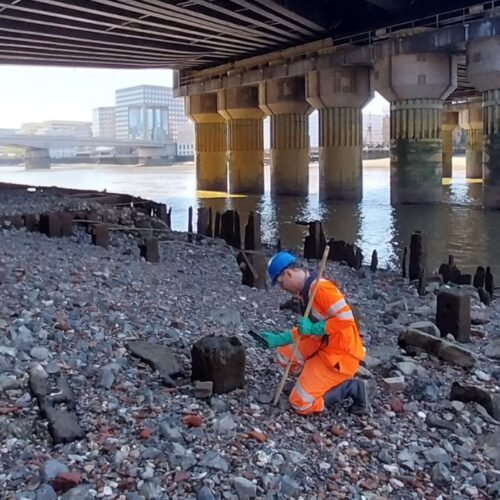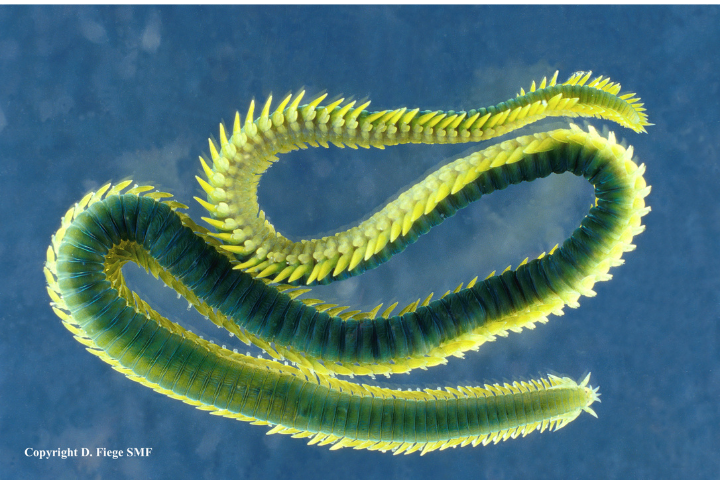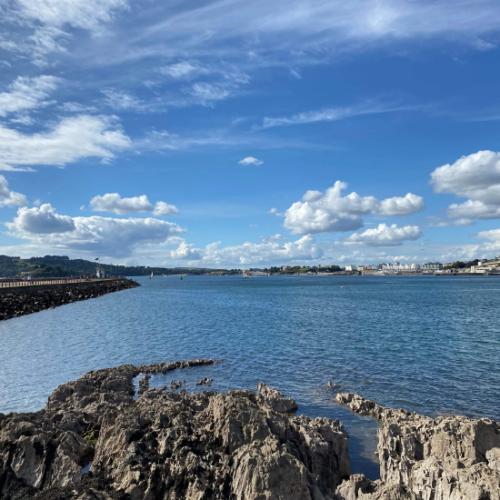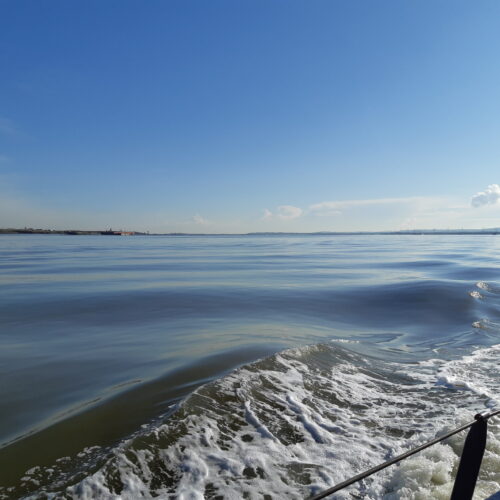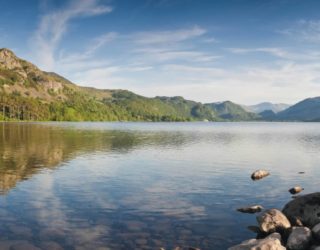Scientists all over the world are studying how wetlands function and the United Nations Environment Program (UNEP) has recognised these coastal ecosystems as critical for preserving global biodiversity and human wellbeing.[1]
But why all this international focus on these environments?
Coastal wetlands comprise seagrasses, saltmarshes, and mangroves, which are flowering marine plants that grow in coastal ocean habitats. Seagrasses and saltmarsh vegetation form dense meadows along sheltered coastlines around the UK and worldwide. They create habitats that support biodiversity and confer other important ecosystem functions, such as wave modification and improving water quality. They not only contribute to healthy oceans but have a global effect by reducing atmospheric carbon levels, and therefore help mitigate the effects of climate change.
Blue carbon refers to the carbon dioxide removed from the atmosphere by these coastal ocean ecosystems through sequestration – the plants take in carbon as they grow, storing it in their tissue and thus removing it from the atmosphere. They are therefore known as carbon sinks. Coastal wetlands sustain the highest rates of carbon sequestration per unit area of all the world’s natural systems. Seagrass meadows have the capacity to store more carbon than the Amazonian rain forest – some species are thought to be 35 times more effective than rainforest at sequestering carbon.
Coastal wetlands are particularly efficient at storing carbon long-term, locking it away on millennial timescales by exporting it to deeper layers of sediment[2]. The plants have a high rate of leaf turnover and when leaves are lost or plants die, they sink into the mud and are buried, rather than decomposing and releasing their carbon to the atmosphere, as happens in forests on land.
Wetland vegetation further accelerates the accumulation and burial of carbon-rich organic matter through their particle trapping and binding capacities. The plants slow water currents, causing particles to sink out of the water column and become trapped in the sediment. Another benefit of this is protection against erosion of marine sediment; wetland habitats with dense and healthy vegetation weaken wave energy and stabilize shoreline sediment[3]. Climate change will lead to warmer oceans, driving more sudden and intense climate events, such as storms, and therefore higher rates of coastal erosion, making protection by coastal vegetation all the more important.
Seagrass meadows and saltmarshes also act as nurseries for a wide range of species, including endangered wildlife, such as seahorses, and commercial ones, such Walleye Pollock[4], cuttlefish and shellfish species. Seagrass meadows have been shown to have a positive effect on stocks of commercially important species such as Atlantic cod by providing a protective nursery habitat[5].
To retain these varied benefits, it is vital to ensure the healthy functioning of wetlands[6], however they are one of the fastest disappearing ecosystems worldwide and are also slow to recover from damage. It has been estimated that the global range of saltmarshes has reduced by up to 35%, and that of seagrasses by up to 29%. Human pressures contributing to their decline include polluted water, coastal development, sea defences, trampling, and disturbance from marine activities such as boating and fishing[1]. The loss of these habitats not only means a decrease in the ecological services they offer but also the release of carbon to the environment as they degrade.
Seagrasses are a critically endangered EU red listed habitat and saltmarshes are a priority habitat under the UK Biodiversity Action Plan and listed under Annex 1 of the European Habitats Directive. Their vulnerability and their potential to mitigate climate change mean that coastal developments must be careful not to negatively impact them. Where negative impacts on saltmarsh from developments are likely, it is necessary for it to be replaced with new ‘biologically equivalent’ habitat elsewhere. For example, this can be achieved through managed realignment, the process of turning farmland back into saltmarsh by breaching sea walls and letting the land revert naturally to how it was prior to reclamation.
However, studies have shown that producing new wetland like this is not a quick fix – it takes a long time before a recreated saltmarsh will have the same mix of plants found in a natural one. The same is true of the area’s ability to act as a carbon sink, with one study suggesting it takes around 100 years for restored saltmarsh to obtain the same carbon stock as natural sites[7].
Clearly, despite their protected status and attempts to replace wetland lost to development, more work is needed to prevent further loss of these key coastal habitats. Scientists in the UK are attempting new methods of active restoration of seagrass meadows, hoping to allow their recovery and expansion and to re-establish them in areas where they have disappeared. This method has already been employed in the USA, where over a period of 20 years nearly 40 km2 of seagrass meadows have established in Chesapeake Bay[10].
The 26th United Nations Climate Change Conference is scheduled to be held in Glasgow during November of 2021, where these coastal systems will likely be a discussion point. Although there has been progress including them in international and national policy, a continued focus on the importance of protecting, enhancing, and restoring these fragile and vital coastal ecosystems is paramount for them to remain a powerful tool for preserving biodiversity and mitigating the effects of climate change.
Get in touch
If you’ve found this article useful for one of your projects or would like further information, please get in touch.
[1] United Nations Environment Programme (2020). Out of the blue: The value of seagrasses to the environment and to people. UNEP, Nairobi.
[2] Ramachandran, Ramesh & Banerjee, Kakolee & Paneerselvam, A. & Raghuraman, R. & Ramachandran, Purvaja & Lakshmi, Ahana. (2019). Importance of Seagrass Management for Effective Mitigation of Climate Change. 10.1016/B978-0-12-810473-6.00015-7.
[3] Björk M., Short F., Mcleod, E. and Beer, S. (2008). Managing Seagrasses for Resilience to Climate Change. IUCN, Gland, Switzerland.
[4] Unsworth RKF, Nordlund LM, Cullen-Unsworth LC. (2018). Seagrass meadows support global fisheries production. Conservation Letters. 12. 10.1111/conl.12566.
[5] McDevitt-Irwin, Jamie & Iacarella, Josephine & Baum, Julia. (2016). Reassessing the nursery role of seagrass habitats from temperate to tropical regions: A meta-analysis:. Marine Ecology Progress Series. 557. 10.3354/meps11848.
[6] Roberts, Callum & O’Leary, Bethan & Mccauley, Douglas & Cury, Philippe & Duarte, Carlos & Lubchenco, Jane & Pauly, Daniel & Sáenz-Arroyo, Andrea & Sumaila, Rashid & Wilson, Rod & Worm, Boris & Castilla, Juan. (2017). Marine reserves can mitigate and promote adaptation to climate change. Proceedings of the National Academy of Sciences. 114. 201701262. 10.1073/pnas.1701262114.
[7] Burden A., Garbutt A. and Evans C. D. 2019 Effect of restoration on saltmarsh carbon accumulation in Eastern England. Biol. Lett. 1520180773
[8] www.projectseagrass.org/action
[9] www.gov.uk/government/publications/life-recreation-remedies-project
[10] Orth, R.J., Lefcheck, J. S., McGlathery, K. S., Aoki, L., Luckenbach, M. W., Moore, K. A., Oreska, M. P. J., Snyder, R., Wilcox, D. J., Lusk, B. 2020. Restoration of seagrass habitat leads to rapid recovery of coastal ecosystem services. Science Advances. Vol. 6, no. 41, eabc6434


